Electric tools Hot air blowers
()Sort by
-

Salki 430208 Purpurin 8x95 mm Glue Stick
7.49 €
-

Salki 430356 8x95 mm Glue Stick
3.99 €
-

Salki 430306 8x95 mm Glue Stick
3.99 €
-

Metabo HG16-500 1600W Hot Air Gun
74.99 €
-

Black & Decker Kx2200K-Qs Heat Gun 2000W
63.99 €
-

Black & Decker Thermal Paint Stripper 2000 W Kx2001-Qs
35.99 €
-

Bosch Gluey Cupcake Pink Silicone Gun
37.49 €
-
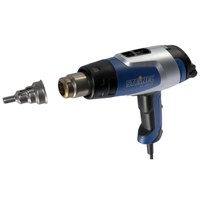
Steinel HL 2020 E KF Heat Gun
141.76 €
-

Steinel HL 1920 E Heat Gun
91.49 €
-

Steinel HG 2120 E Heat Gun
89.49 €
-

Steinel Gluematic 3002 Glue Gun
28.99 €
-

Steinel 18 V Cordless Hot Air Gun With Carrying Case
349.06 €
-
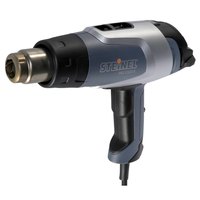
Steinel HG 2320 E Heat Gun
166.99 €
-

Steinel HG 2220 E Heat Gun
146.88 €
-

Steinel Gluematic 5000 Glue Gun
68.99 €
-

Steinel Glue Pro 400 LCD KF Glue Gun
282.42 €
-
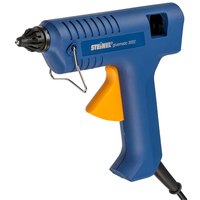
Steinel Gluematic 3002 KF Glue Gun
35.99 €
-
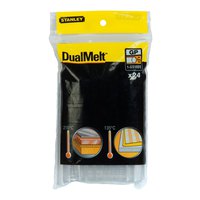
Stanley Dual 1-GS10DT Glue Stick
3.49 €
-
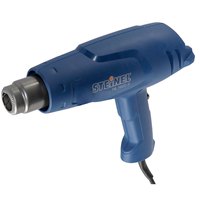
Steinel HL 1620 S Heat Gun
58.99 €
-
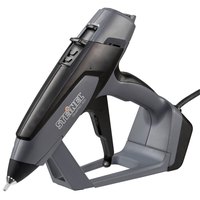
Steinel Glue Pro 300 Glue Gun
148.99 €
-

Salki 430407 12x195 mm Glue Stick
10.99 €
-

Makita DHG180Z Hot Air Gun
106.99 €
-

Makita HG6031VK Hot Air Gun 1800W
85.49 €
-
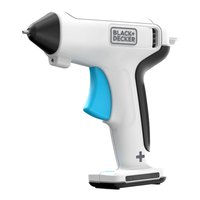
Black & Decker BCGL115-XJ Silicone Gun 3.6V
32.99 €
-
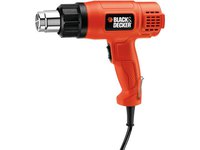
Black & Decker Stripper 230 V Kx1650-qs
23.49 €
-

Bosch PKP 18 E Silicone Gun
33.99 €
-

Bosch Gluey Lagoon Blue Silicone Gun
41.49 €
-

Bosch PKP 3.6 Li Silicone Gun
63.99 €
-

Bosch EasyHeat 500 Hot Air Gun
50.49 €
-

Bosch UniversalHeat 600 Hot Air Gun
73.49 €
-

Bosch GHG 20-63+Case+Kit Acc+Briefcase Hot Air Gun
159.99 €
-

Bosch GHG 23-66 Professional Hot Air Gun
182.49 €
-

Bosch LowMelt 11x200 mm 500g Glue Stick
20.49 €
-

Bosch 14 mm Hot Air Gun Reducing Nozzle
11.99 €
-

Bosch 7x150 mm Glue Stick 30 Units
6.99 €
-

Bosch 7x20 mm Glue Stick 70 Units
3.99 €
-

Bosch Mix Pop 7x20 mm Glue Stick
4.99 €
-

Bosch Material Up To 5 mm Hot Air Gun Welding Shoe
19.99 €
-

Bosch GHG 23-66 Heat Gun
214.99 €
-

Bosch GHG 20-60 Professional Hot Air Gun
169.99 €
-

Bosch GKP 200 CE Professional Silicone Gun
138.99 €
-

Bosch Gluey Evergreen Silicone Gun
41.49 €
-

Bosch Gluey Marshmallow Silicone Gun
41.49 €
-

Bosch GLUEPEN Silicone Gun
46.99 €
-

Bosch GHG 18V-50 Hot Air Gun
203.99 €
-

Bosch Glitter 5x14 mm Glue Stick
7.99 €
-

Bosch Color 5x14 mm Glue Stick
4.99 €
-

Bosch AdvancedGlue 18V Baretool Silicone Gun
54.99 €
-

Bosch 4x225 mm Polypropylene Welding Wire
13.49 €
-

Bosch 4x225 mm Polyethylene Welding Wire
12.99 €
-

Bosch 80 mm Hot Air Gun Angle Nozzle
18.99 €
-

Bosch 9 mm Hot Air Gun Reducing Nozzle
12.99 €
-

Bosch 11x200 mm 500g Glue Stick
15.99 €
-

Bosch 11x200 mm 500g Glue Stick
15.99 €
-

Bosch Hot Air Gun Reflector Nozzle
13.99 €
-

Bosch Universal Heat 600 Hot Air Gun
73.49 €
-

Powerplus 4V Silicone Gun 2 Pieces
22.49 €
-

Powerplus 100W Soldering Gun
19.49 €
-

Powerplus POWXG6601 2000W Weed Burner
33.99 €
-

Mota Herramientas JU07 Glue Gun 7 mm
8.99 €
-
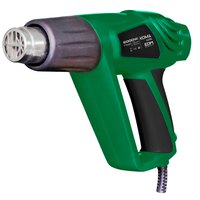
Koma Tools 2000W Hot Air Gun
17.49 €
-

Mota Herramientas JU11 Glue Gun 11 mm
12.49 €
-

Nimo HSRV7687 Silicone Gun 100W
10.99 €
-

9transport 36V 14A Battery For Lola Electric Bike
277.69 €
-

Einhell TE-HA 18 Li Battery Heat Gun
68.49 €
-
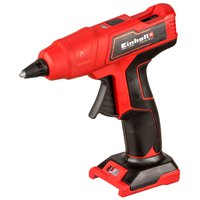
Einhell TE-CG 18 Li Battery Glue Gun
40.99 €
-

Steinel Cristal Hot Glue Sticks 7 mm 16 Units
10.89 €
-

Salki 430206 Purpurin 12x95 mm Glue Stick
8.99 €
-

Dremel 930 Silicone Gun
24.49 €
-

Cecotec Perfect Color 4020 Ultra Silicone Gun
85.99 €
-

Powerplus 2000W Wallpaper Steamer
48.99 €
-

Ferrestock FSKPOL001 Polyurethane Gun
9.99 €
-
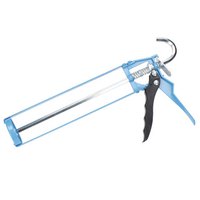
Ferrestock FSKWN002 Silicone Gun
3.99 €
-

Steinel Ultra Power Glue Stick 5 Units
2.99 €
-
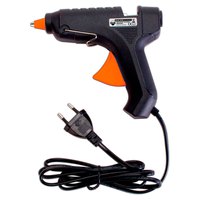
Rubi r65940 Silicone Gun
15.99 €
-

Dremel Wood 7 mm Glue Stick
6.99 €
-

Dremel DR High Temperature 7 mm Glue Stick
6.99 €
-

JBM 53224 glue stick 5 units
9.99 €
-

Kreator 7 mm Glue Stick 12 Pieces
1.99 €
-

Kreator 225 mm 9´´ Silicone Gun
4.99 €
-

Kreator Metal 225 mm 9´´ Silicone Gun
6.99 €
-

Rapid BT 125g Glue Stick
13.99 €
-

Rapid D7x94 mm 125g Glue Stick
2.99 €
-

Rapid Oval R/V/A 125g Glue Stick
17.99 €
-

Rapid R1600 Hot Air Gun
42.99 €
-

Rapid R1800 Hot Air Gun
45.99 €
-

Fixpoint 11-12 mm Hot Melt Glue Gun
8.05 €
-

Ferrestock FSKPTF003 10W Silicone Gun With Battery
23.99 €
-

Ferrestock FSKPOL002 Polyurethane Gun
18.99 €
-

Ferrestock LD2002 180W Silicone Gun
18.99 €
-

Ferrestock FSKCHN002 Silicone Gun
6.99 €
-

Rapid Eg111 40303076 Silicone Gun 500g
31.99 €
-

Ferrestock FSKBTF003 Glue Stick 7x200 mm 60 Units
7.49 €
-

Ferrestock FSKBTF004 Glue Stick 11x200 mm 60 Units
11.99 €
-
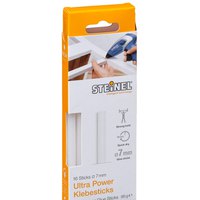
Steinel Ultra Power Hot Glue Sticks 7 mm 16 Units
4.99 €
-
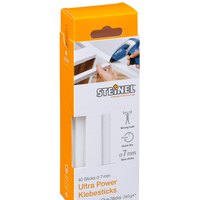
Steinel Ultra Power Hot Glue Sticks 7 mm 40 Units
8.99 €
How to choose a hot air blower?
Common usage of a hot air gun contains thawing frozen tubes during winter cold breaks, denying paint and elder wallpaper when remodeling or redecorating, extracting flooring, upholstering or fixing furniture, and more. Hot air guns are utilized in an assortment of tasks from renovating old furniture, fixing car bumpers, defrost water tubes to relatively developed applications like cable airfields, and car wrapping.A heat gun is an instrument utilized to radiate a streamlet of hot air, generally at temperatures between 100 °C to 550 °C with some hotter instances operating around 760 °C which can be held by hand. You can buy these heat guns from these brands: Bosch, Metabo, Steinel, Black & Decker, and Koma Tools.
Full size high temperature battery glue gun operates well for heavy duty repairs and large innovative projects. For other projects concerning weightless materials, such as gluing material to create throw cushions, a shorter, light duty glue gun should suffice.
A silicon gun is a unique tool having a cartridge or conduit filled with the material utilized to plug gaps and cracks. Caulk can be created of silicone or latex. Tips to choose a hot air gun
Here are some tips to choose a hot air gun:
· Choose a durable hot air gun with warranty.
· Review the working of an air gun before choosing it.
· Choose a gun having adjustable airflow settings because it is very helpful.
When selecting a hot air blower, there are several factors to consider to ensure you choose the right tool for your specific needs. Here are some tips to help you in the selection process:
Temperature and airflow control: Look for a hot air blower that offers adjustable temperature and airflow settings. This allows you to customize the heat and airflow intensity based on the task at hand. Different applications may require different temperature ranges and airflow speeds, so having this flexibility is crucial.
Power and heating element: Consider the power rating and heating element of the hot air blower. Higher wattage models tend to generate more heat and provide faster heating times. Additionally, check the quality and durability of the heating element to ensure consistent and reliable performance.
Temperature range: Evaluate the temperature range of the hot air blower. Different projects may require specific temperature settings. Make sure the blower can reach the desired temperature range for your intended applications. Some blowers may have a wide range of temperature options, while others have fixed temperature settings.
Nozzle attachments: Check the availability of nozzle attachments with the hot air blower. Nozzles help concentrate and direct the airflow, allowing for more precise and targeted heating. Look for a blower that comes with a variety of nozzle options to accommodate different tasks, such as wide flat nozzles, cone shaped nozzles, or specialized attachments for specific applications.
Safety features: Ensure that the hot air blower has essential safety features. Look for features such as overheat protection, automatic shut off, or a cool down mode to prevent overheating and accidents. A blower with a sturdy handle and an ergonomic grip can also enhance safety and control during operation.
Cord length and mobility: Consider the cord length and mobility features of the hot air blower. A longer cord provides more flexibility and freedom of movement, allowing you to reach different areas without the need for extension cords. Additionally, some models may have cordless options or come with swivel cords for better maneuverability.

























